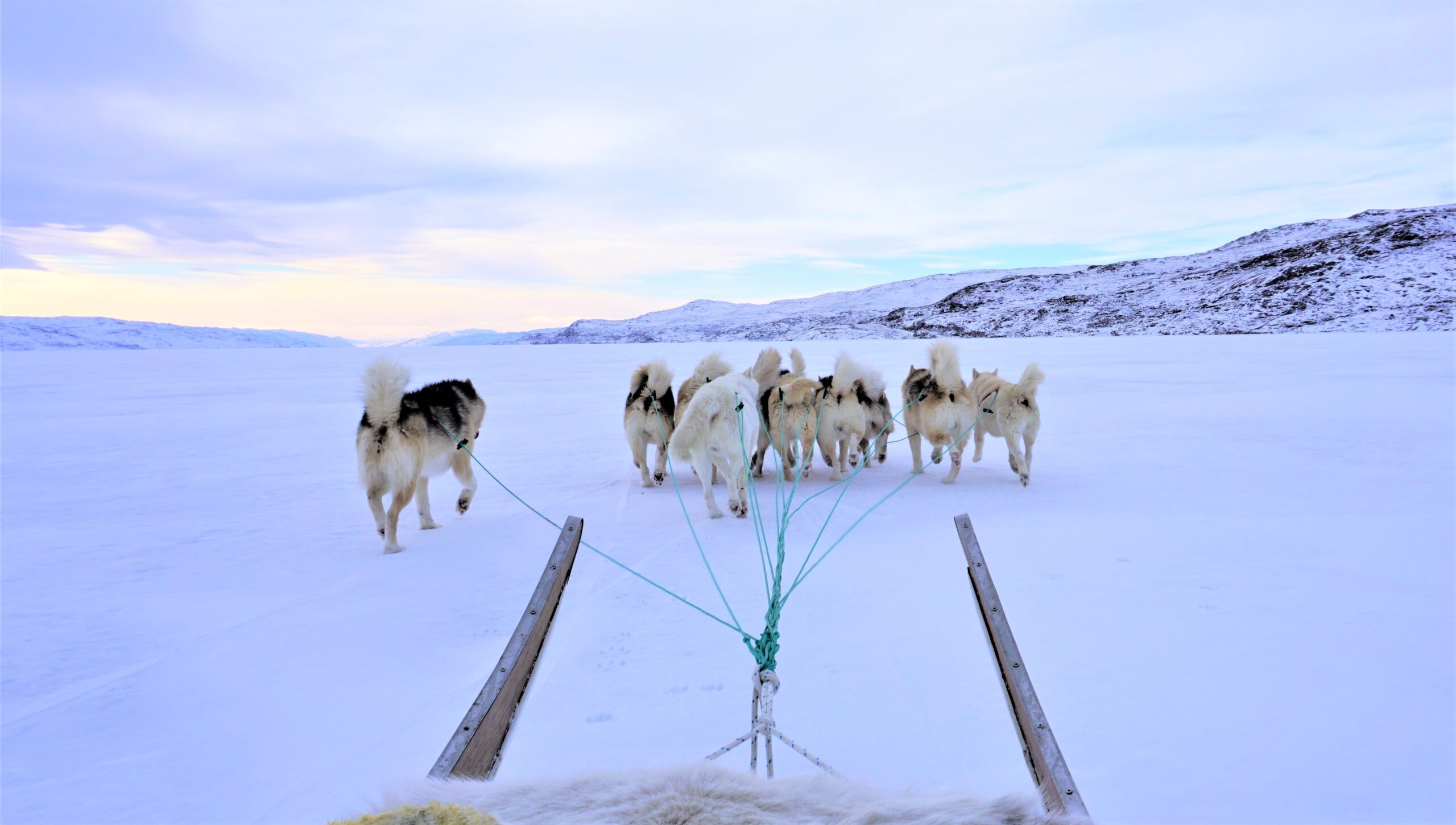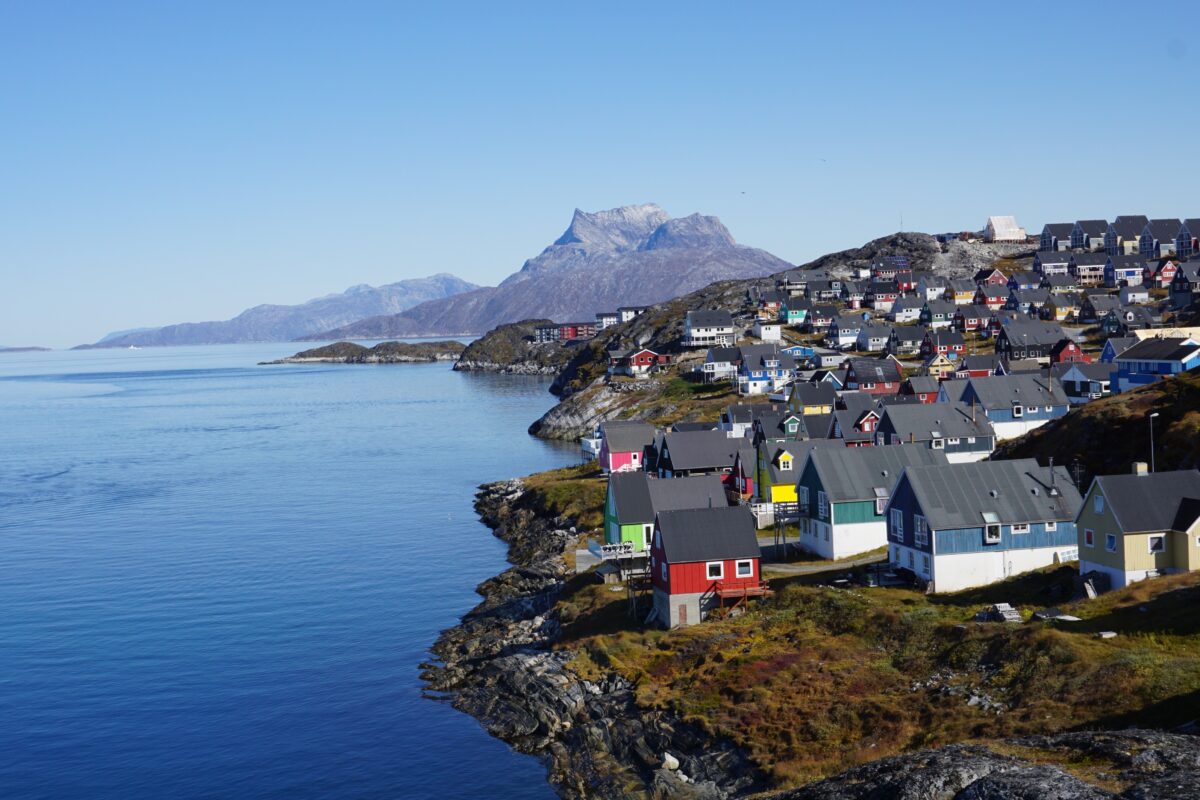- Sara Olsvig chairs the Inuit Circumpolar Council (ICC), which represents some 180,000 Inuit people across Alaska (in the United States), Canada, Kalaallit Nunaat (the Inuit name for Greenland) and Chukotka (in Russia).
- Climate change has reduced the extent of sea ice in the Arctic Ocean, opening up new shipping lanes and increasing interest in various forms of resource exploitation, including for oil, gas and minerals.
- The ICC is engaged in negotiations over the development and implementation of major international agreements on shipping, plastics, and the management of biodiversity in the high seas, all under United Nations bodies.
- In all of these forums, the ICC is pushing for input into international rules that affect Inuit livelihoods and the Arctic environment.
Sara Olsvig is a veteran advocate for Indigenous rights at international meetings, maneuvering with some success even at institutions not known to be particularly adaptive.
“Through the many decades of advocacy and Indigenous diplomacy that we’ve been doing, we have seen how much we can impact decision-making in the U.N.,” she says.
Olsvig chairs the Inuit Circumpolar Council (ICC), which represents some 180,000 Inuit people across Alaska (in the United States), Canada, Kalaallit Nunaat (the Inuit name for Greenland) and Chukotka (in Russia). She grew up in Inuit communities in Greenland, the world’s largest island and an autonomous territory within the Kingdom of Denmark, and has served in both the Greenlandic and Danish parliaments.
The ICC has been at work since 1977, yet some of its most essential international efforts are underway today. The Inuit are a coastal people who largely live off the sea, and much of the ICC’s work focuses on marine governance. Climate change has reduced the extent of sea ice in the Arctic Ocean, opening up new shipping lanes and increasing interest in various forms of resource exploitation, including for oil, gas and minerals.
As these pivotal changes take place, the ICC is engaged in negotiations over the development of major marine-related international agreements under U.N. bodies. These include shipping decarbonization talks and other rule-making processes at the International Maritime Organization (IMO); the drafting of a global plastics treaty; and the implementation of the agreement on marine biodiversity of areas beyond national jurisdiction (BBNJ), which is also called the “high seas treaty.” Each will have direct effects on Indigenous peoples in the Arctic region and the ecosystems they rely on.
The ICC is also working on the implementation of the Central Arctic Ocean Fisheries Agreement, a deal signed by 10 countries in 2018 that established a fisheries moratorium in the international waters of the Arctic Ocean. The research and monitoring for the agreement is run by a framework that incorporates Indigenous knowledge — rare in international treaties. The ICC is also pushing for the establishment of an Indigenous-led marine protected area for an open-water area between Greenland and Canada called Pikialasorsuaq (North Water Polynya).
Mongabay’s Edward Carver spoke with Olsvig in a video call. The interview has been edited for length and clarity.

Mongabay: In early July, the ICC gained “permanent consultative status” at the IMO, which regulates global shipping — the first Indigenous peoples’ organization to do so. The accreditation doesn’t confer voting rights but does ensure the right to participate in IMO negotiations and processes. Why is this significant?
Sara Olsvig: There are massive developments regionally and internationally in drawing up new policies responding to climate change, which is opening up increased activities in the Arctic, including shipping.
We want to turn around the way the U.N. worked in the early days. For example, the U.N. Convention on the Law of the Sea is an important treaty and an important instrument for international cooperation, but it was drawn up without the participation of Indigenous peoples. We don’t want decisions taken about us without us. Nothing about us without us — that is our fundamental principle in the IMO. The technical work that goes on there, even apart from the policymaking, is very tangibly and directly related to us.
I saw last year, for example, how Inuit people in the very north of Kalaallit Nunaat (Greenland) were raising concerns about the noise of ships disturbing their traditional hunt. We are also seeing how people there in Kalaallit Nunaat are dealing with more tourists — big cruise ships that we are trying to manage in a sustainable way. They are emitting different kinds of pollutants and black carbon, and people are seeing that and expressing their concern. And we are seeing concerns about how invasive species can be brought into the Arctic with ballast water. And we all know how fragile our Arctic environment is.
These things are directly impacting us and our access to the right to a healthy and safe environment, and also our access to the right to continue our cultures and livelihoods as we’ve known them for millennia.

Mongabay: How does this tie into your work at the IMO?
Sara Olsvig: All of these are things that are dealt with in the IMO: How do we reduce underwater radiated noise? How do we reduce the emission of black carbon from ships? How do we regulate so that we can prevent invasive species? Those are examples of some of the technical work that we’ve been able to participate in while we have been applying for the permanent status.
We have, since 2021, had a provisional consultative status at the IMO through which we have participated in themes and work on these areas. So, for us, it was very obvious and clear that our voice needs to be in these meetings, be they technical or be they political decision-making meetings. And we’ve seen how important it is to bring in Inuit knowledge holders.
Mongabay: From Aug. 18-29, parties will gather for a BBNJ (high seas treaty) meeting in New York known as PrepCom 2, in which governance issues and financial rules are to be discussed. What are your objectives for these BBNJ talks and for BBNJ generally? What’s at stake for Inuit communities?
Sara Olsvig: Like we see at many other U.N. venues, there are a few basic principles that we call for. We want a full — and with no qualifications — recognition of the U.N. Declaration on the Rights of Indigenous Peoples that sets out the minimum standard and affirms our rights in terms of both individual rights and collective rights. We too often see that when the U.N. draws up treaties or sets up the processes or subsidiary bodies, they don’t automatically implement the rights of Indigenous peoples as they are affirmed in the U.N. declaration. For example, we are currently working to deal with this problem at the UNFCCC [U.N. Framework Convention on Climate Change] and in the new plastics treaty that’s being drawn up, which isn’t even recognizing the rights of Indigenous peoples in the current draft text.
Full recognition of Indigenous rights is something that we are closely monitoring and pushing for under the BBNJ as well. As of right now, it doesn’t have very strong language. It does have a paragraph that to some extent recognizes the importance of the knowledge of Indigenous peoples, but recognizing the knowledge of Indigenous peoples doesn’t mean the full recognition of our rights.
The other problem is that the BBNJ treaty reproduces an unacceptable conflation of Indigenous peoples with so-called “local communities.” That’s a recurring issue that’s unfortunately seen across the U.N. system, sometimes deliberately by states to devalue the rights of Indigenous peoples. It creates an ambiguity of the legal subject. Indigenous peoples have a legally binding status in the world with the U.N. declaration. But when this conflation with local communities is made, then we have a very big task ahead of us to make sure that in the implementation phase, they don’t devalue our rights.

Mongabay: Why is the Inuit and Indigenous perspective key to the implementation of BBNJ?
Sara Olsvig: Further work on this treaty can help address historical injustices and inequalities that we face as Inuit and as Indigenous peoples across the board. One of the very fundamental things that we bring to the table as Inuit and as Indigenous peoples is that we don’t view ourselves as human beings as separate from nature. So, when you draw up treaties and agreements that are related to biodiversity and ecosystems, you have to use a human rights-based approach.
Also, as Inuit, we’re living across these very different nation states. These are constructs — the ecosystems and the animals and the biodiversity of our homelands and seas, they don’t know these state borders. The ability to think in a cross-border and ecosystem-based way is something that we have contributed to in other fora, such as the Arctic Council, and we need to continue pushing this way of thinking to be adopted under BBNJ.

Mongabay: With shipping traffic increasing in Arctic waters, how can coastal livelihoods and marine ecosystems be protected? What role does the ICC play?
Sara Olsvig: We’re trying to influence a wide range of processes that all respond to the increased activities in the Arctic. One example is the Central Arctic Ocean Fisheries Agreement, which basically is a moratorium on commercial fisheries until we have safe and sound scientific knowledge, including Indigenous knowledge, in drawing up reports, so that fishing that might take place in the future is well-regulated.
There’s increased need for both the BBNJ and the IMO to focus on the Arctic. We need internationally binding agreements to regulate and protect us as peoples, as well as the environment of the Arctic. And we know that if the agreements are done without us, they might involve regulation that harms us instead of helps us. That’s what we’ve seen for so many years as Indigenous peoples, that we are not invited to the table. So even though some might think that their work is in the name of a greater good, it ends up harming us and our rights.
The regulations need to ensure that any activities in the Arctic don’t harm our peoples and are done in a way that we can continue our traditional livelihoods, that pollution is reduced and that the increased shipping is done in a way that doesn’t cause further harm to our societies and peoples.
Banner image: A view of Nuuk, Greenland’s capital, a small city on the southwest coast. Image courtesy of ICC.
Feedback: Use this form to send a message to the author of this post. If you want to post a public comment, you can do that at the bottom of the page.
